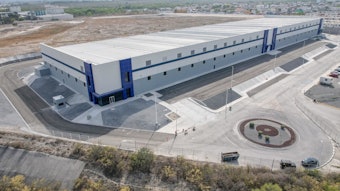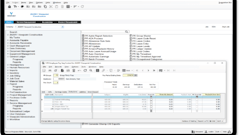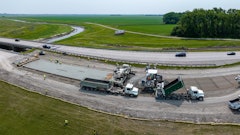
Buoyed by an infusion of cash that is set to come into the construction industry from key pieces of legislation – including the Creating Helpful Incentives to Produce Semiconductors (CHIPS) Act, Inflation Reduction Act (IRA) and the Infrastructure Investment and Jobs Act (IIJA) – following a year of near 20% growth in 2023, many businesses within the construction sector were hopeful for yet another banner year when the calendar flipped over to 2024.
Yet, with growth projected to slow dramatically in 2024 down to 2%, many businesses are coming to grips with the reality that the post-COVID boom will not go on forever. Meaning, managing cash flow and financial operations has become a foremost priority once again.
From juggling contractual obligations to navigating complex costing, financial management is challenging in the best of times for construction businesses. But with such a significant slowdown in growth lurking on the horizon, ensuring that business is on stable footing before disruptions hit is essential for construction leaders.
With that in mind, as construction finance teams refocus their priorities on what may lay ahead for the remainder of 2024, here are several key considerations construction businesses need to keep in mind.
Making Sense of the State of Backlog
Amid the uneasiness stemming from the projected industry slowdown in 2024, backlog has actually been a bit of a silver lining for the industry in 2024…at least so far. Dipping to 8.4 months in October 2023 – its lowest ebb since Q1 2022 – backlog has shown a promising rebound, jumping to 8.6 months to close out 2023 as credit conditions improved as part of an overall strong economic year-end. That said, with inflation remaining stubbornly high, and geopolitical upheaval in the Middle East, Europe and Asia continuing to stoke fears of new supply chain constraints, taking precautions to make sure that backlog is accurately mapped out will be essential as the potential for choppy economic waters to crop up in 2024 remains high.
Continue Prioritizing Profitability
In the face of this economic uncertainty, construction businesses will undoubtedly face the urge to run out and hoard new projects as a way to insulate themselves against future economic downturns. On the surface, this may make sense as businesses will have the peace of mind of knowing they have a never-ending backlog, but in reality, acting in this way can put businesses under a huge amount of economic stress that can undermine a business’s long-term well-being. A construction business’s success hinges on its profitability, which depends on balancing a myriad of priorities and business demands over the short-, medium- and long-term. If businesses lose sight of this and resort to sacrificing their profitability just to pile up backlog, financial health can quickly spiral as businesses have to over-extend themselves, their project management becomes increasingly unwieldy, and they slowly slip into the red as a result. Navigating uncertain economic times is stressful, but businesses need to keep their eyes on their long-term viability and act accordingly versus reacting to near-term market conditions, which can actually have the opposite effect by undermining. It is essential that construction leaders prevent this from happening, and instead prioritize balancing the short-, medium- and long-term.
Avoid Costing Shortcuts
Costing is the lifeblood of the construction industry, so it is imperative that construction leaders have the best practices in place and steer clear of having bad habits slip in. Keep costs for each job separate to have a granular understanding of exactly what each job cost. Pay close attention to the various factors impacting material costs such as seasonal demand and shipping costs. Take an itemized approach to labor costs that takes into account everything from hourly pay to benefits. These are just a few of the best practices that construction business owners need to undertake to ensure that their costing is as accurate as possible. Granted, this will be tedious. However, the more accurate information business owners have at their disposal the easier it becomes to make better costing decisions and to optimize their business’s financial health.
Embrace Technology
Digital transformation has become a staple of the business world’s vernacular since the outbreak of the Covid-19 pandemic four years ago. However, while many business sectors have continued to double down on technology investments, construction businesses have not been nearly as agile. Construction businesses are notoriously slow moving when it comes to adopting technology in their back-office functions. However, as these businesses face heightened regulatory scrutiny in the wake of receiving funds from the IRA, and as the space gets more and more competitive as a result of consolidation and struggling demand adopting technology to help themselves better manage their workflows is quickly becoming a make or break for a construction business’ financial success. From automating the job costing process to generating better visibility into their accounts receivable and accounts payable workflows modern technology can help businesses ease many of the headaches that they are currently experiencing and propel them to new heights moving forward both in 2024 and beyond.
Whether it is coping with fluctuating materials costs or navigating multi-state compliance demands, the financial management workflow within the construction industry is one of the most hectic throughout the business world. And the ambiguity that hangs over the world economy for the rest of 2024 will only make this more challenging. However, by keeping these few elements in mind, construction businesses will be able to successfully navigate any hurdles that crop up in 2024 and build the successful financial foundations they need to find financial success in the future, as well.


























